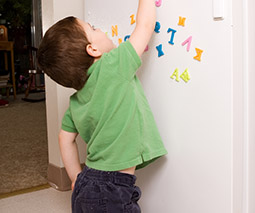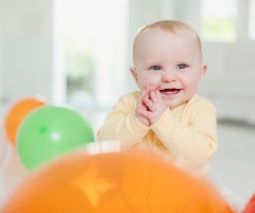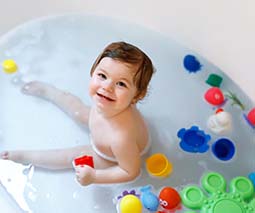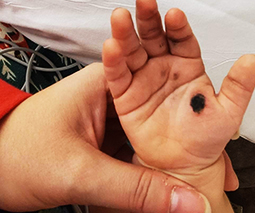Experts’ urgent warning to parents about “toppling hazards”

The injury – and death – toll caused by toppling, unsecured furniture and electronic equipment is not spoken about enough, which is why we’re re-publishing this important reminder for parents.
Plea to stop these preventable injuries and deaths
The Australian Competition and Consumer Commission (ACCC) and child safety organisation Kidsafe joined forces in 2018 to launch a national awareness campaign, aimed at preventing Australian families being harmed by falling furniture.
The ACCC says that around 2,600 Australians are treated in hospital each year due to injuries caused by TVs and furniture falling on them. That’s a whopping 50 people every week.
Worse still, 22 children were killed by toppling furniture or TVs between 2001 and 2018. Kids under three are most at risk of harm.
Kidsafe and the ACCC have urged parents to urgently check for unstable bookcases, drawers, wardrobes, sideboards and TVs to keep their children safe. Just last month, ACCC chair Rod Sims said in his annual speech that “industry self-regulation is not leading to sufficiently safe practices” and that the ACCC would work to identify more effective risk controls as a result.

Kirstie Rogers and Tim Shaw
A family’s worst nightmare
It’s a message that is sadly echoed by grieving parents Tim Shaw and Kirstie Rogers. The couple fronted the important campaign, drawing on their own tragic experience. Tim and Kirstie’s son Blake was just three in 2016 when a cabinet in their home fell on top of him, fatally injuring their little boy. They don’t want anyone else to go through what they’ve endured.
“Crash and bang … and the cabinet was down,” a devastated Kirstie says in the campaign video.
“Got the cabinet up to the top, and he was just right in the bottom corner, just curled up,” a heartbroken Tim recalled. “He was gone by then.”
Other children’s lives have been lost recently, and their parents have spoken out in the hopes of saving more families from tragedy. In 2015, WA toddler Reef Kite died when a chest of drawers toppled onto him.
Reef’s mum Skye Quartermaine pushed for a change in rental laws in the wake of her son’s death. Skye had requested permission to secure the chest of drawers to the wall of the family’s rental property prior to the accident, but her request was declined. In 2019, a new bill was passed through state parliament to allow tenants to secure toppling hazards to walls in order to protect their children.
Skye’s family’s Bolt It Back For Reef Facebook page shares advice on safely securing furniture – and raises awareness of just how dangerous toppling furniture can be.
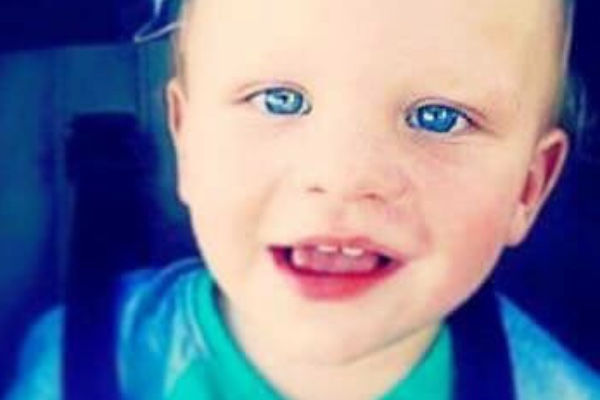
Reef Kite
Understanding injuries from toppling furniture
“The sad news is that every year, one or two children like Blake will die from injuries from toppling furniture or television,” Dr Warwick Teague, Trauma Service Director at Melbourne’s Royal Children’s Hospital says.
“Particularly injuries here are in children that are about one or two years of age. Sometimes as young as six months of age, and they have mostly sustained injuries to their head: this could be fractures of the skull, it could be injuries to the brain itself or bleeds on or around the brain … these are injuries with potential long-term or even life-threatening consequences.”
The ACCC elaborates further noting that broken bones, brain injuries, blunt force trauma, crushed chest cavities and death by asphyxiation are all possible consequences of a falling bookcase, cabinet, wardrobe or TV.
It is a very, very serious issue – and one we must not ignore.
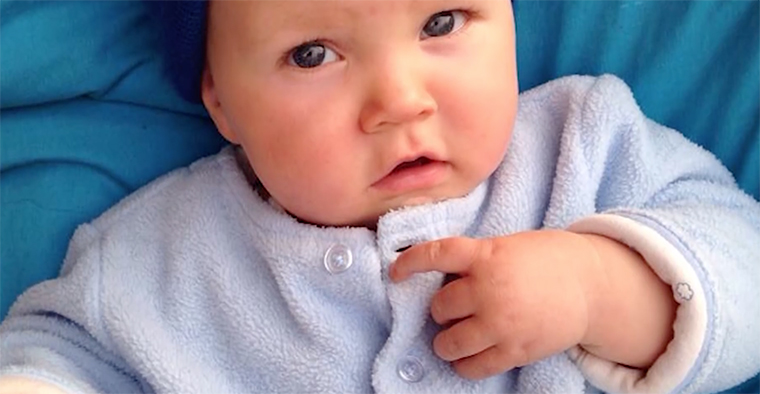
Blake Shaw
Tour your home – from your child’s point of view
Melanie Courtney, CEO of Kidsafe Victoria reminds parents that small children have a very different view of their world, and their adventurous instincts can expose them to danger.
“Children are naturally inquisitive and common household furniture can look very different and interesting from a toddler’s perspective – for example, they may see items of furniture like bookcases and shelves as a ladder to gain access to reach an item that is stored up high,” Melanie says.
“This is why it’s important that anyone who has young children in their home – either living there or visiting – is aware of the dangers.”
When it comes to furnishing your home, remember to CHOOSE safe and USE safe. Here’s how:
CHOOSE safe
Melanie says that if the furniture you buy doesn’t come with fixtures to anchor it to the wall, head to the hardware shop and buy your own anchoring products to keep things safe. If you are unable to fasten furniture to walls – remove and replace items with safe choices that don’t pose a toppling risk.
The campaign also advises parents to think of safety – not just good looks – when you’re buying furniture or equipment for your home. A smart choice could save your child’s life.
- Purchase low-set furniture or furniture with sturdy, stable and broad bases.
- Look for furniture that comes with safety information or equipment for anchoring it to the walls.
- Test the furniture in the shop – make sure it is stable. For example, pull out top drawers of a chest of drawers and apply a little pressure to see how stable it is. Make sure the drawers do not fall out easily.
USE safe
Safely securing large or bulky items is as vital as buckling your child up correctly in the car or their stroller. Kidsafe and the ACCC recommend you:
- Attach, mount, bolt or otherwise secure furniture to walls and floors.
- Do not put heavy items on top shelves of bookcases.
- Secure televisions to the wall.
- Discourage small children from climbing on furniture.
- Do not put tempting items such as favourite toys on top of furniture that encourage children to climb up and reach.
- Do not place unstable furniture near where children play.
- Put locking devices on all drawers to prevent children from opening them and using them as steps.

Blake Shaw
“It’s really hard to watch Kirstie and Tim talk about Blake and not be moved, and it makes you think about children in your home and what dangers you do have,” Kidsafe Victoria’s Melanie Courtney told the Sydney Morning Herald. “Really, it can happen in just a split second and completely change your life.”
Dr Teague of Melbourne’s Royal Children’s’ Hospital agrees. “There’s no wall and no piece of furniture that’s more precious and more beautiful than your child.”
This article was originally published on June 26, 2018.

